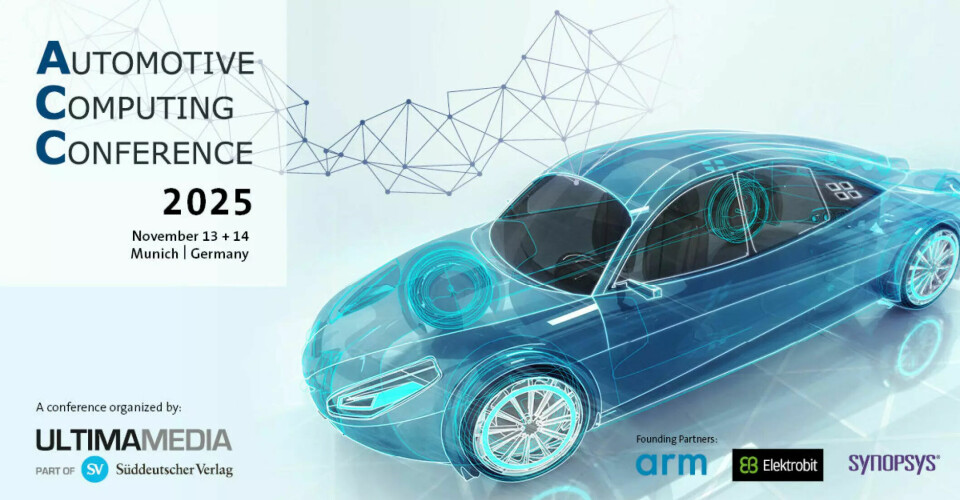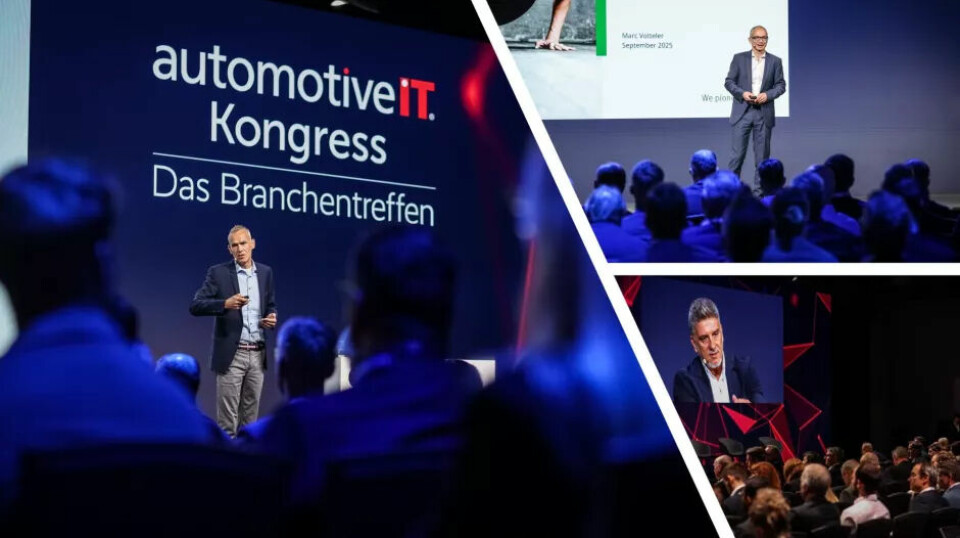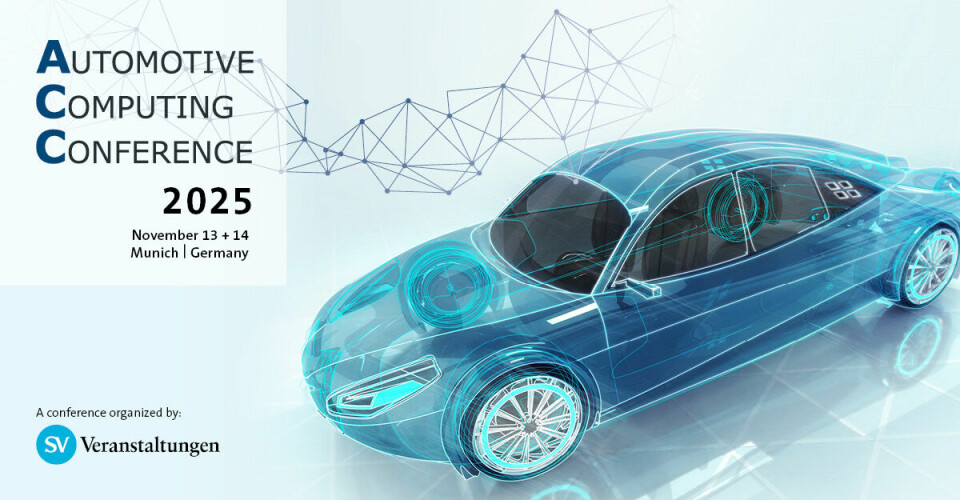Software Defined Vehicles
Experience future visions up close
What to expect at the Automotive Computing Conference 2025

At the Automotive Computing Conference 2025 in Munich from 13 to 14 November, innovation and mobility come together. Experts share insights on how AI, high performance computing (HPC), and chiplets are transforming the automotive world.
The 7th edition of the Automotive Computing Conference will take place on 13 and 14 November at the NH Munich East Conference Center in Aschheim near Munich. Organised by Ultima Media Germany GmbH in cooperation with Süddeutscher Verlag Veranstaltungen GmbH, the conference is a central meeting point for professionals in the fields of high-performance computing, software-defined vehicles, and E/E architectures.
The focus is on the latest developments in hardware-software co-design, the integration of AI, chiplet architectures, and the further development of electrical/electronic (E/E) structures in vehicles.
These are the topics and focal points of the Automotive Computing Conference 2025
The ACC 2025 addresses current key topics:
- Hardware and software trends and architectures
- Developments in the core markets of Europe, China, and the USA
- System and performance optimisation
- Hardware enablement for the software-defined vehicle (SDV)
- Intelligent vehicles and AI platforms
- Chiplet trends and markets
Top speakers 2025
The list of speakers underscores the high relevance of the event. Here is a selection from the comprehensive agenda:
- Dr Sergey Tverdyshev, chief architect at NIO, talks about the interplay of software and hardware architecture for a lean and future-proof E/E architecture.
- Andreas Lock, senior expert and former vice president at Robert Bosch, provides insights into the new zonal vehicle architectures from the perspective of a leading global supplier.
- Robert Siwy, software manager at BMW, together with colleagues, practically examines the role of simulation and virtualisation in the vehicle development process.
- Vishal Mishra, secure diagnostics architect at Daimler Truck, addresses the security challenges in hyper-connected vehicle architectures.
- Deepak Vedha Raj Sudhakar, SoC performance architect at Mercedes-Benz, presents strategies for optimising system performance and validating complex SDV architectures.
- Kai Konrad, head of global semiconductor purchasing at Stellantis, provides insights into the strategic importance of semiconductor partnerships for a global car manufacturer.
Networking and community at the ACC
A central element of the ACC is networking: participants have the opportunity to exchange ideas with international experts, share knowledge, and develop collaborations for future projects. In addition to the numerous Q&A slots, panels, and breaks, the evening event on 13 November, with the dinner speech by Laure Bousquet (CEO LBerate) and Björn Schuh (independent consultant, formerly Audi), offers a platform for personal exchange. There are also networking lunches on both days as well as an accompanying exhibition. In-person and virtual participation options ensure maximum flexibility for the international delegation.
What new technologies are shaping the automotive industry?
The automotive industry is being transformed by technologies such as software-defined vehicles (SDV), centralised E/E architectures, and connected control units. A highlight in this regard is the keynote by Dr Sergey Tverdyshev (NIO) on co-design of software and electrical/electronic systems, as well as the presentation by Dr Andreas Lock (Bosch) on the ZVEI initiative for new zonal architectures. Eugene Wang (SemiDrive) also demonstrates, using the example of the 'AI eCockpit', how Chinese manufacturers are taking the lead with E/E upgrades and AI integration.
How is artificial intelligence changing mobility?
AI plays a key role in the mobility of the future. The programme shows how concrete this transformation already is:
- Thomas Dannemann (Qualcomm) explains how agentic AI is used in vehicles to recognise driver preferences and optimise routes.
- Tom Conway (Arm) presents the Arm Zena CSS platform for standardisation of virtual prototyping solutions.
- Chris Jacobs (Micron) highlights the memory challenges that arise when large language models and vision-language models enter the vehicle.
These sessions illustrate how generative and multimodal AI is evolving the car from an assistant to a learning partner.
What is the significance of hardware-software co-design?
The interaction between hardware and software is a key focus at ACC 2025. In his keynote, Dr Moritz Neukirchner (Elektrobit) demonstrates how to achieve an 'SDV Level 5' despite tight budgets - with clear methodology, well-thought-out architectural strategies, and consistent co-design. Olaf Schmidt (INCHRON) and Deepak Vedha Raj Sudhakar (Mercedes-Benz) also address the topic, explaining how model-based simulation helps predict critical resources in the early stages of development. Additionally, Stefan Walter (dSPACE) highlights the role of SIL/HIL continuity in CI/CT pipelines to shorten development cycles and efficiently validate complex SDV architectures. It becomes clear that co-design is no longer a distant vision but a well-established practice in the industry.
What are the latest trends in high-performance computing?
High-performance computing forms the backbone of modern vehicle platforms, and in Munich, it becomes clear which trends are currently shaping the industry. Stefan Singer (Renesas) describes the communication challenges in zonal architectures closely linked to the introduction of HPC systems. Peter Gliwa (GLIWA GmbH) discusses the impact of new processor architectures on the timing of embedded software and shows why precise timing remains crucial for safety and efficiency. Young-Hun Kluge (BOS Semiconductors) presents chiplet-based architectures for ADAS and IVI - a key technology to balance performance, cost, and flexibility. The topic is rounded off by a high-profile panel featuring Bart Placklé (Imec), Ricardo Gomez (Samsung), and representatives from Synopsys and Cadence, who discuss the standardisation and future markets of chiplets. These examples make it clear that HPC is far more than just computing power: it is evolving into a platform for scalable, secure, and efficient vehicle intelligence.
This article was first published at all-electronics.de


